How To Insulate a Shipping Container Home – 9 Best Options
-
Greg Iacono
- Last updated:
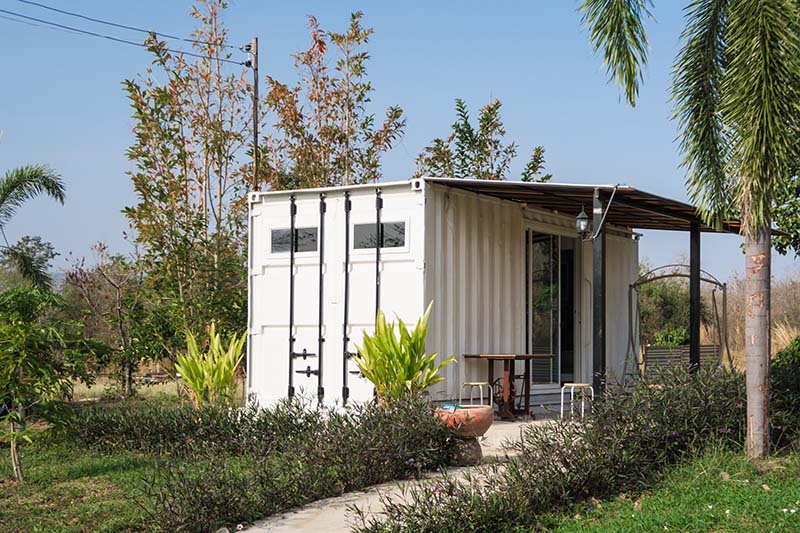
Over the last couple of decades, shipping container homes have skyrocketed in popularity. They’re made from used (and sometimes new) shipping containers and offer several benefits to home builders and buyers, most notably their low initial cost. However, like any home construction, shipping containers must be insulated to keep the occupants inside warm in winter and cool in summer.
Without insulation, a shipping container’s bare, corten steel walls won’t hold in heat or cold or prevent either from rapidly escaping. Our nine insulation options will be quite valuable if you’re in the planning stages of building a home from shipping containers and are curious about insulating yours. Read on to keep your new home comfy regardless of the weather outside.
Before you Begin
One of the most important aspects of shipping containers you need to know before you start is that they have exceedingly thin walls. Unlike a home built with studs, there’s no gap between a shipping container’s exterior and interior walls. That means you’ll need to create a gap to be able to place the insulation between them. Most builders and DIYers do that by putting beams inside the shipping container, much like a traditional home.
How To Insulate a Shipping Container Home
1. Spray Foam Insulation
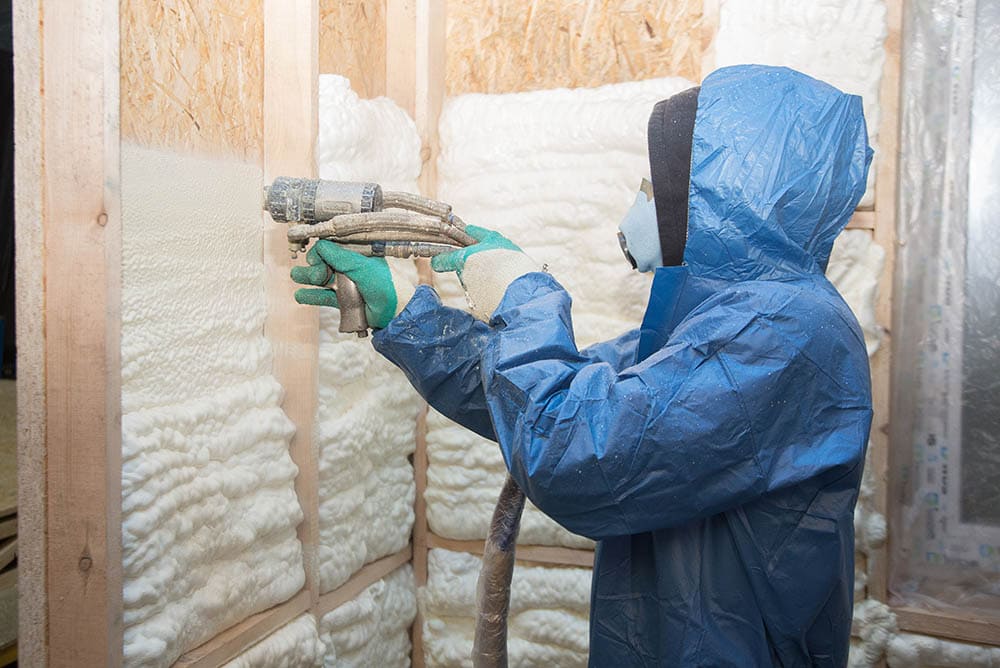
Spray foam insulation is one of the easiest methods of insulating a shipping container home. The ability to spray the foam into seams, cracks, and crevices also makes spray foam insulation a quick method to insulate a shipping container. Even better, it can be sprayed on both the inside and, if you like, outside walls.
Spray foam insulation also has the added benefit of covering the paint used to protect shipping containers, which is made to withstand the perils of the sea (mostly salt) and is usually quite toxic. Once the spray foam insulation is in place, any VOCs (Volatile Organic Compounds) that could potentially off-gas into your shipping container home will be effectively nullified.
- Excellent insulating properties
- Easy to apply
- Fills in cracks and crevices
- Prevents off-gassing
- Usually needs to be installed by a professional
2. Recycled Denin Cotton Insulation
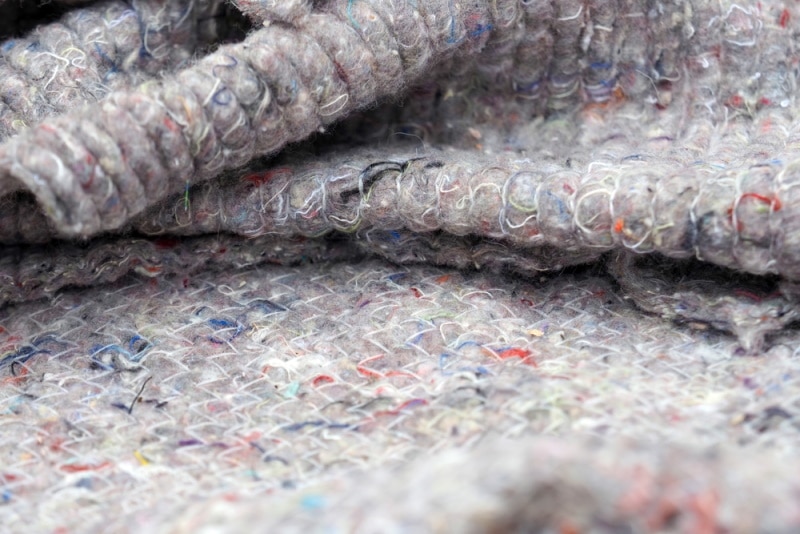
If recycling is important to you, consider recycled denim cotton insulation for your shipping container. With an R-value of 3.5 per inch, recycled denim cotton insulation is practically identical to traditional insulation made from fiberglass but isn’t as risky to work with. Another benefit this type of insulation offers is that most companies making recycled denim cotton insulation treat it with boric acid (a natural substance) first to make it fire retardant.
You should note that recycled denim cotton insulation has one or two drawbacks. For example, you need to install a vapor barrier to prevent it from getting wet. If recycled cotton insulation gets wet, it loses its insulation properties, becomes dense, and takes an exceptionally long time to dry.
- Excellent insulating properties
- Eco-friendly
- Recyclable
- Must be treated with boric acid to be fire retardant
- Difficult to find in some cases
- Must install a vapor barrier
3. Blanket (Traditional) Insulation
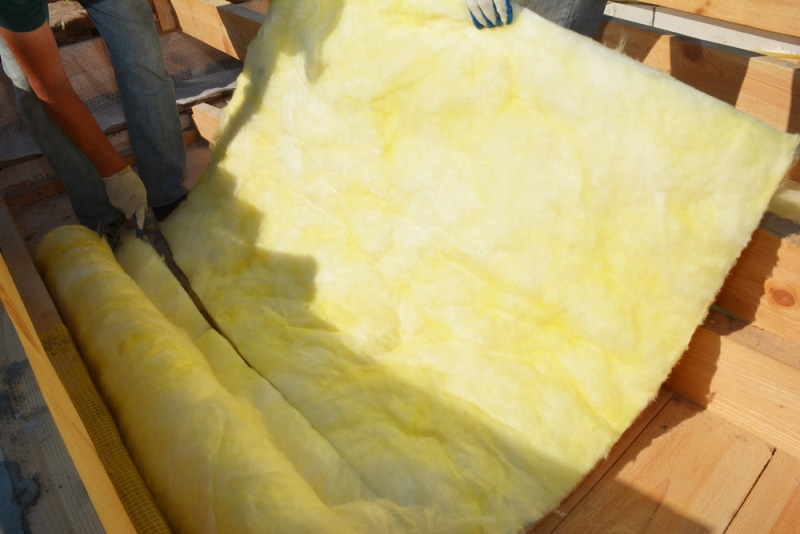
One of the cheapest methods of insulating a shipping container home is to use traditional blanket insulation that you find at big-box home improvement stores. Although it’s generally made from fiberglass, blanket insulation can also be made from slag wool, cotton, mineral wool, rock wool, and even sheep’s wool.
However, fiberglass blanket insulation is the cheapest and is one of the most commonly used insulation products in the United States and many other Western countries. As the name suggests, it comes in blankets or sheets that fit directly between studs spaced 16 inches apart. The major drawback to fiberglass blanket insulation is that fiberglass is an irritant that can irritate your skin and lungs if breathed in. The proper protective gear must be used when installing fiberglass insulation.
- Easy to install
- Economical
- Easy to find
- Insulates very well
- Skin, eye, and lung irritant
- Not eco-friendly
4. Cork Insulation

Renewable and 100% biodegradable cork insulation is an excellent alternative to traditional home insulation and will work well insulating a shipping container home. One amazing fact about cork is that the harvesting process is “carbon-negative” because cork trees aren’t cut down to harvest the cork used in the insulation.
Another substantial benefit of using cork insulation is that it has excellent acoustic properties and forms a buffer between the inside of your home and the metal walls of the shipping container. Many people who have built shipping container homes have found the acoustics (i.e., sound quality) inside to be exceedingly noisy, but with cork insulation, your interior acoustics will be significantly improved.
- Eco-friendly
- Has excellent acoustic properties
- Excellent insulating properties
- Difficult to find
- Expensive
5. Hempcrete Insulation
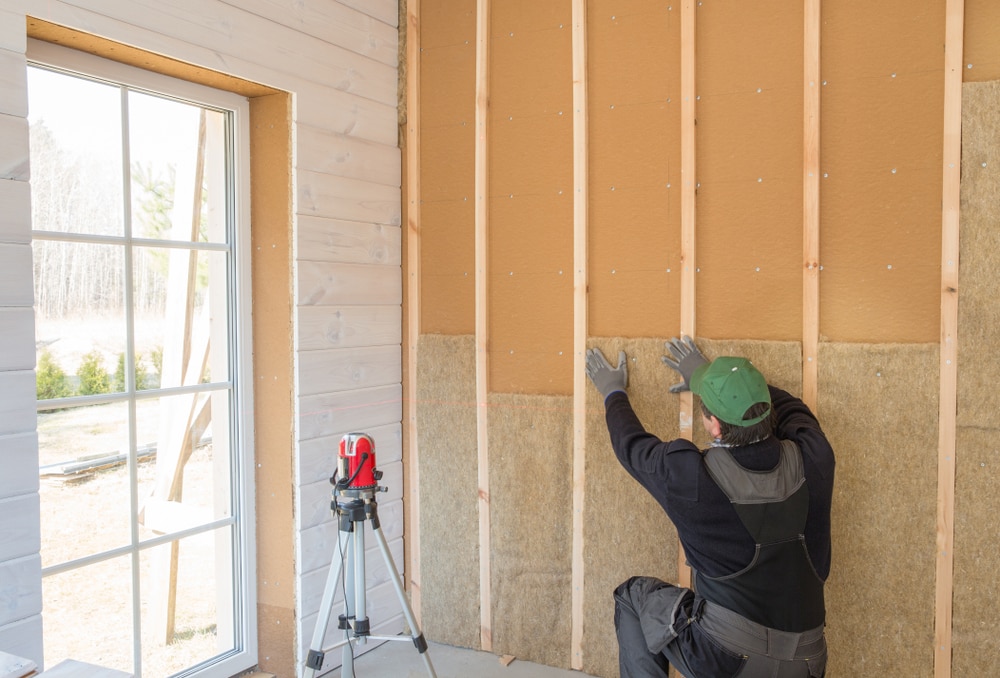
Hempcrete is an ancient building material made from the core of the hemp plant and a binder made from lime. Hempcrete has several excellent benefits that you probably aren’t aware of because it’s not used very often in the United States, at least not yet. They include affordability, the ability to handle moisture well, and carbon sequestration. Hempcrete captures carbon dioxide and keeps it from entering the atmosphere.
It is also a non-toxic building material and is 100% biodegradable. As an insulation, however, hempcrete isn’t perfect since it has good (but not exceptional) thermal performance. That said, hempcrete would be a good fit in a warmer climate with mild winters.
- Eco-friendly
- Add rigidity to the walls
- 100% biodegradable
- Handles moisture well
- Only offers moderate insulating properties
6. Wool Insulation
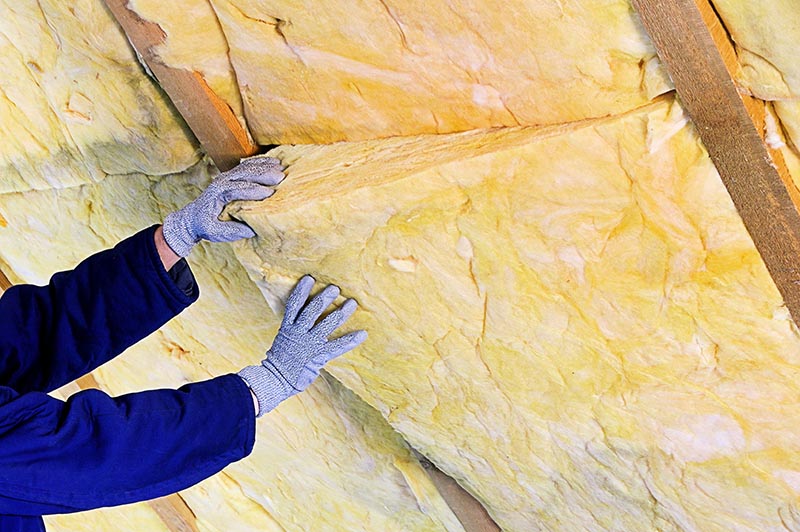
Wool insulation is a desirable option for several reasons when building a shipping container home. First, the price, surprisingly, is comparable to fiberglass insulation. Secondly, with an R-value of R-13 through R-19, wool insulation keeps you cozy in winter and summer.
Then there’s the fact that the lanolin found in sheep’s wool is a natural flame-retardant, so it doesn’t need to be treated with chemicals. Lastly, while some types of insulation will lose their insulating properties if they get wet, sheep’s wool can absorb nearly 35% of its weight in water before its thermal performance sees any noticeable drop.
- Eco-friendly
- Affordable
- Recyclable
- Naturally fire-resistant
- Handles moisture exceptionally well
- Difficult to find
7. A Rooftop Garden

This insulation method for shipping container homes isn’t used inside but on the roof of your shipping container. The steel used to make shipping containers is on all four walls and is an inferior insulating material. For that reason, most people who build their own shipping container homes insulate the roof also, so that cool or hot air doesn’t escape.
When you create a rooftop garden on top of your shipping container home, the soil, grass, and plants are excellent insulators that reduce solar radiation that would otherwise enter and heat your home. Plus, if you’ve ever seen a shipping container home with a rooftop garden, you probably noticed how attractive and aesthetically pleasing it was.
- Eco-friendly
- Looks beautiful
- Blocks the sun’s UV rays and heat
- Expensive
- You might need extra roof support
- Blocks heat in winter
8. Expanded Foam Insulation
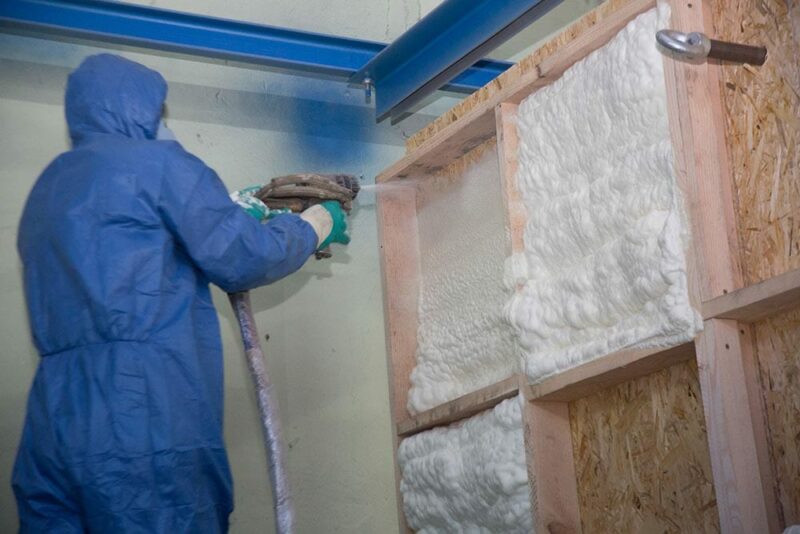
Since it’s similar to blanket insulation, expanded foam supports itself and can be easily cut using a hand saw. That makes it very DIY friendly as it can be quickly and easily attached between studs, glued to the side of a shipping container, and used to insulate the roof of a shipping container.
The drawback is that there are sometimes large gaps between pieces of expanded foam insulation that need to be filled if you don’t want heated or cooled air to escape. One benefit is that expanded foam insulation typically has the highest R-value per inch of almost all insulating products (as long as there are no large gaps). Also, there are five types of spray foam insulation:
- Open Cell Polyurethane Foam Insulation (oc PU Foam)
- Closed Cell Polyurethane Foam Insulation (cc PU Foam)
- Extruded Polystyrene Foam Insulation (EPS)
- Expanded Polystyrene Foam Insulation (XPS)
- Polyisocyanurate (aka Polyiso)
- Easy to cut and install
- Excellent insulating properties
- Rigid
- Leaves gaps that you must fill
9. Purchase an Insulated Shipping Container
Although most shipping containers have bare walls, refrigerated shipping containers are already insulated because they were used to carry products that needed to remain cold. Purchasing an insulated shipping container would, if not completely eliminate, significantly reduce the amount of insulation you need. However, they have several drawbacks, including the price, which can be considerably higher than a standard shipping container.
- Insulated from the start
- Less insulation needed
- Excellent insulating properties
- Costs more than a regular shipping container
- Difficult to work with, depending on your plans
- Harder to find than a standard container
What to Consider when Insulating a Shipping Container Home
As with any home construction project, there are several factors you must keep in mind when insulating your shipping container home. If you don’t, you might find that your new home is too cold in winter or too hot in summer because it’s not insulated well.
The Local Climate
The insulation you use in your shipping container home depends almost exclusively on the climate where you intend to build it and live. If, for example, you’re modifying a shipping container home in Green Bay, Wisconsin, you’ll need much more insulation than in Savannah, Georgia.
Consult an insulation expert
Find an insulation specialist in your area, and get free, no-commitment estimates for your project.

You Probably Need a Vapor Barrier
While some forms of insulation can handle moisture well, many can’t. For this reason, a vapor barrier is recommended by construction experts so that your insulation is protected from any vapor (i.e., moisture) that might come through the shipping container’s exterior walls. In most cases, a vapor barrier is simply a large sheet of plastic hung from the ceiling to the floor on all four exterior walls.
Some Insulation is More Eco-Friendly than Others
If you’re looking for eco-friendly insulating materials, consider wool, cotton, cellulose, and hempcrete, which are natural, recyclable, and offer other eco-friendly advantages.
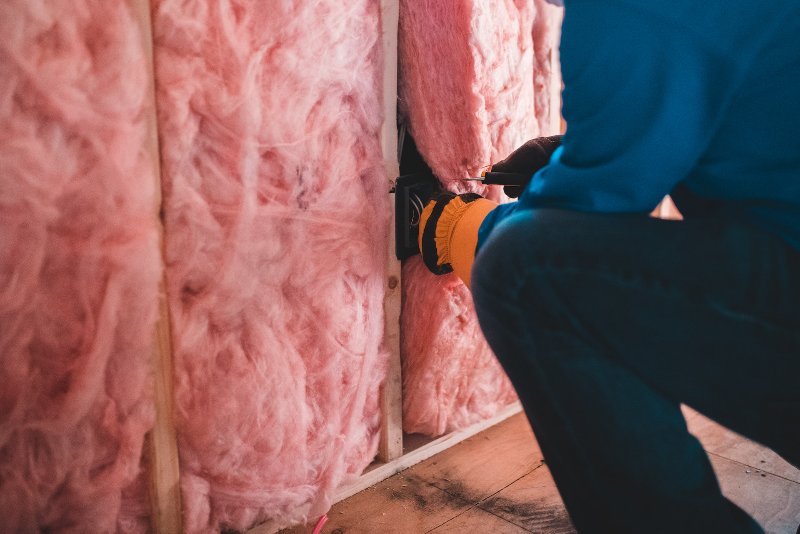
Interior or Exterior Insulation
One of the most significant drawbacks to building a home using shipping containers is that, at 8 feet wide, they don’t provide much interior space. Filling that space with insulation will reduce it even further, which is why builders choose to put insulation on the exterior of their shipping container rather than the interior. The advantage is that, by placing insulation outside the shipping container, you have more room to live inside. The disadvantage is that the natural aesthetic of the shipping container is lost, which many people seem to enjoy. Also, insulating the exterior of a shipping container is about 20 to 30% more expensive (and more difficult) than insulating the interior.
Final Thoughts
In most cases, insulating a shipping container home is very similar to insulating a traditionally constructed home. Insulation is placed between an exterior and interior wall so that it forms a “sandwich” and keeps the interior of the domicile either warm in winter or cool in summer.
Hopefully, the information we’ve presented today has given you plenty of food for thought as to how you will insulate your new shipping container home. Whatever you choose for insulation, we wish you all the best for excellent results and a new home that keeps you comfortable throughout the year.
Featured Image Credit: Ezzolo, Shutterstock
Contents

